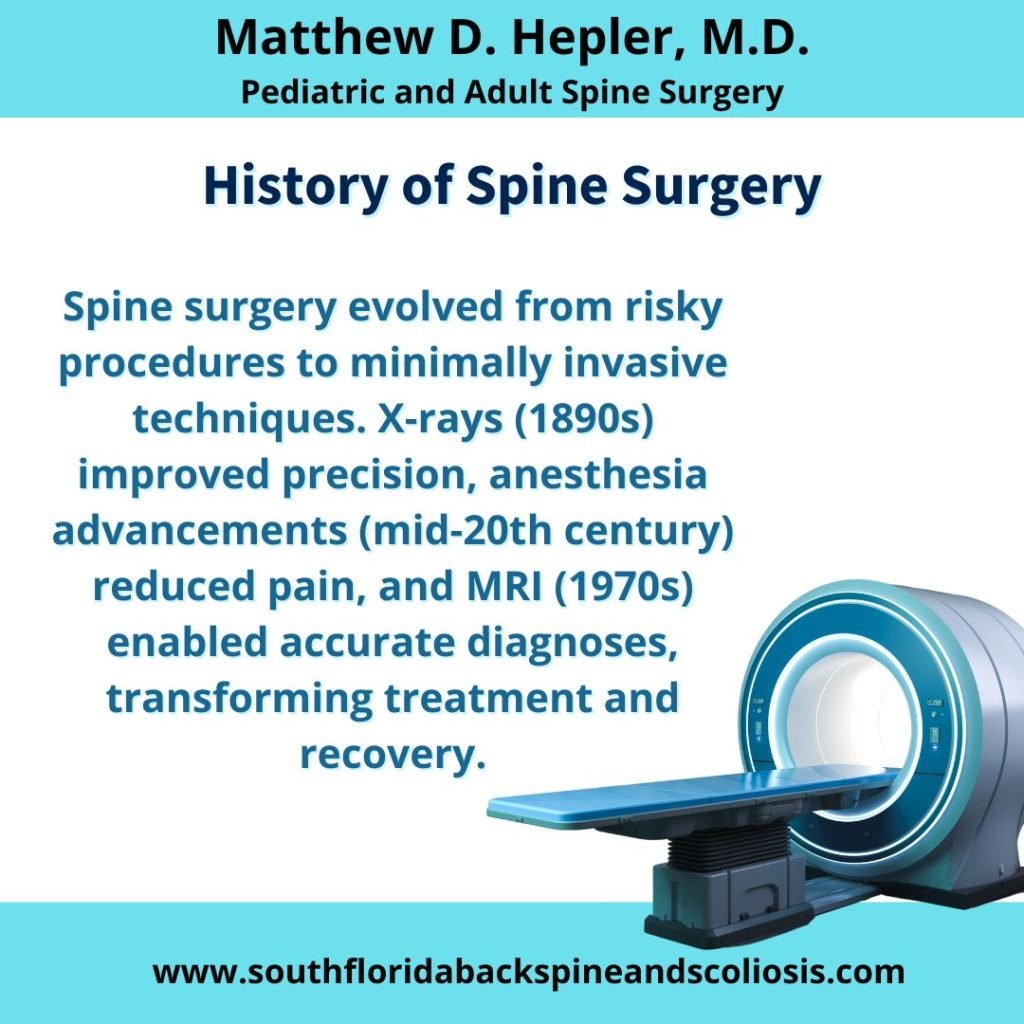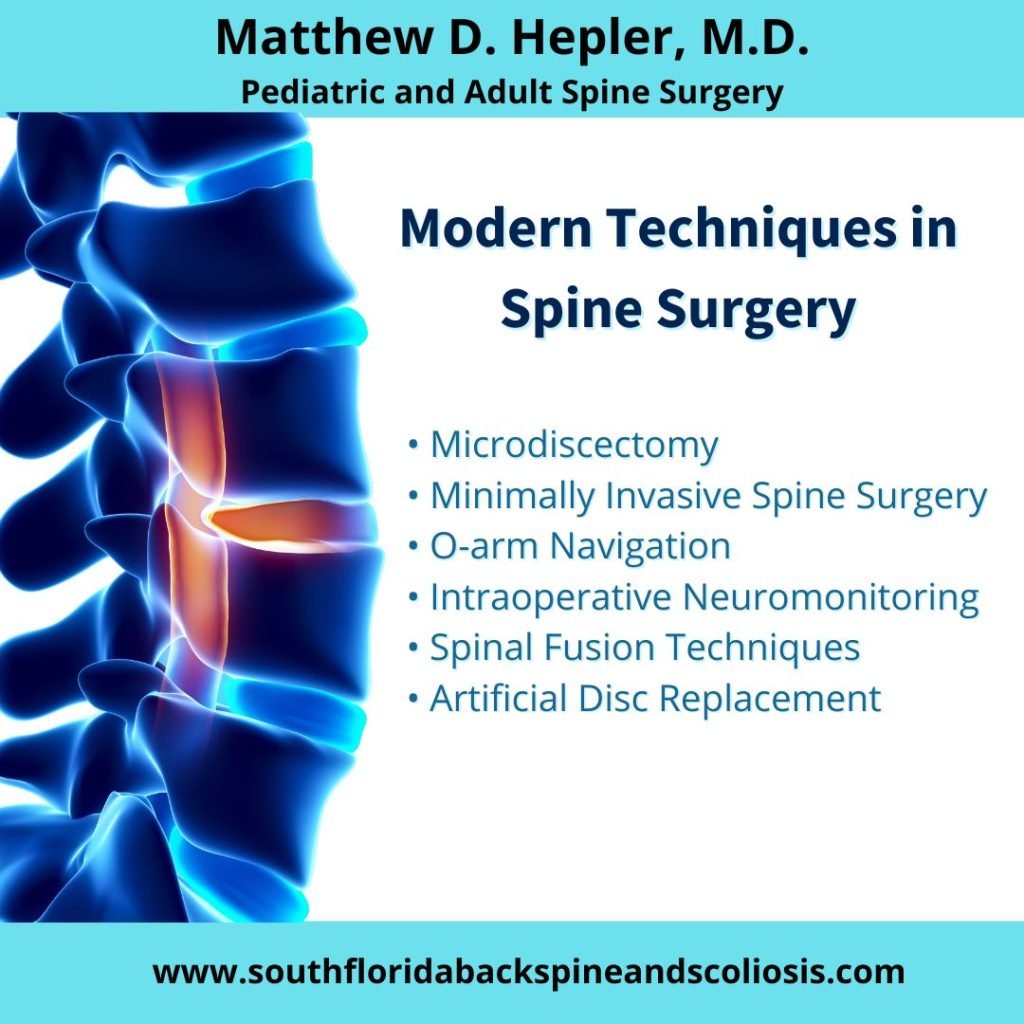Recent Advancements in Spine Surgery
Spine surgery has come a long way over the years. What once were risky, complex procedures have now become more precise, safer, and less invasive, thanks to advances in technology and medical knowledge. The field has evolved, offering patients faster recovery times, fewer complications, and better outcomes.
In this article, you’ll learn about the history of spine surgery, modern techniques now used, and how these innovations are transforming patient care.

A Brief History of Spine Surgery
Spine surgery, like many other areas of medicine, has gone through significant changes since its early beginnings. Early attempts to treat spinal issues often involved crude and risky methods, without the benefit of modern diagnostic tools or surgical instruments.
At the start of the 20th century, spine surgery was extremely invasive and often carried high risks. Surgeons used large incisions to access the spine and had limited visibility of the surrounding structures. Many of these surgeries had poor outcomes due to the lack of imaging technologies and the invasiveness of the procedures.
The introduction of X-rays in the 1890s marked a turning point in spine surgery. With the ability to visualize bones inside the body, surgeons could plan their procedures more effectively, leading to better precision during surgeries. This breakthrough, however, was just the beginning.
In the mid-20th century, advancements in anesthesia techniques allowed surgeries to become less painful and more manageable for patients. Surgeons could now perform spinal procedures with a greater level of care, and more patients could benefit from these interventions. However, the procedures were still invasive, requiring long recovery times and posing significant risks for complications.
The next major leap came with the introduction of Magnetic Resonance Imaging (MRI) in the 1970s. MRI technology allowed for detailed images of soft tissues, providing doctors with a clearer picture of the spine, spinal cord, and surrounding muscles. This technology improved the precision of diagnosis and treatment, making it easier for surgeons to pinpoint the exact location of problems like herniated discs or spinal stenosis.
By the late 20th century, minimally invasive spine surgery began to take off. Surgeons developed techniques that allowed them to treat conditions with smaller incisions, reducing the risk of infection and accelerating recovery times. This shift marked the beginning of a new era in spine surgery, one that continues to focus on reducing the impact of surgery on patients’ lives.

Modern Techniques in Spine Surgery
Today, spine surgery is more advanced than ever, thanks to innovative techniques that prioritize both safety and comfort. Here are some of the most exciting developments in the field:
Microdiscectomy: Precision at Its Best
Microdiscectomy is a minimally invasive surgery designed to treat herniated discs. These discs can press on nerves, causing significant pain and discomfort.
In this procedure, a small incision—typically only a few centimeters—is made to access the spine. The surgeon carefully removes the portion of the disc that’s causing the issue.
By using small incisions, this technique minimizes disruption to surrounding muscles and tissues. As a result, patients experience less pain during recovery and heal faster than with traditional surgery.
Minimally Invasive Spine Surgery (MISS): Less Pain, Faster Recovery
Minimally invasive spine surgery (MISS) is revolutionizing how spinal conditions are treated.
Instead of large incisions, MISS uses smaller openings to perform a variety of spinal procedures. This reduces the damage to muscles and tissues, which translates to quicker recovery times and less postoperative pain.
Techniques like Posterior (transforaminal) Lateral Interbody Fusion (P/TLIF) are often used to treat degenerative disc disease and spinal instability. By accessing the spine through these smaller incisions, surgeons can address complex issues while minimizing the impact on the body.
With MISS, patients often experience faster recovery, reduced pain, and fewer complications. It’s a significant step forward in the world of spine surgery.
O-arm Navigation: Unmatched Precision During Surgery
O-arm navigation is an advanced imaging technology that enhances precision during spine surgery. This system provides real-time, 3D images of the spine, allowing surgeons to navigate with pinpoint accuracy.
The O-arm is especially useful in complex procedures, such as spinal fusion. By using this cutting-edge imaging, surgeons can position instruments with remarkable precision, improving the chances of a successful outcome.
The result? Fewer complications, faster recovery, and a higher level of accuracy in surgery.
Intraoperative Neuromonitoring: Protecting Nerves, Enhancing Safety
Intraoperative neuromonitoring is a technology used during surgery to protect the nerves. Sensors are placed around the body to monitor nerve activity in real time.
This system alerts the surgeon if any nerve is at risk of being damaged during the procedure, helping prevent complications. It’s particularly helpful in complex spinal surgeries, such as spinal fusion, where the nerves are vulnerable.
By using intraoperative neuromonitoring, surgeons can ensure that the surgery is both safe and effective. This technology plays a crucial role in enhancing patient outcomes, especially in delicate spinal procedures.
Spinal Fusion Techniques: Stabilizing the Spine
Spinal fusion is a common procedure used to treat patients with spinal instability or degenerative disc disease. The goal is to fuse two or more vertebrae together to create stability in the spine.
Procedures like Anterior Lumbar Interbody Fusion (ALIF) and Posterior Lateral Fusion (PLF) are often used for this purpose. By fusing the vertebrae, the spine is stabilized, and the pain caused by movement or instability is reduced.
Advances in spinal fusion, including minimally invasive techniques, have greatly improved recovery times. Patients are able to heal more quickly with less pain, allowing them to get back to their lives sooner.
Artificial Disc Replacement: Preserving Motion and Reducing Pain
For patients with severe disc degeneration, artificial disc replacement is a groundbreaking option. Unlike traditional spinal fusion, which limits motion, this procedure replaces the damaged disc with an artificial one.
The benefit of this method is that it preserves the patient’s natural range of motion in the spine, providing a more natural feel after surgery.
Both cervical and lumbar disc arthroplasty are available options that maintain spinal function while alleviating pain. By choosing artificial disc replacement, patients can regain a more active lifestyle without the limitations of fusion surgery.
Why Choose Dr. Hepler for Your Spine Care
When it comes to spine surgery, the choice of surgeon is crucial for achieving the best possible outcomes. Dr. Matthew Hepler is recognized as the best spine specialist in South Florida who combines the latest in medical technology with a commitment to patient care.
With expertise in both minimally invasive and complex spinal procedures, he provides personalized solutions for patients seeking relief from back pain or spinal conditions. His focus on precision and personalized care ensures that patients receive the highest standard of treatment.
For your convenience, Dr. Hepler’s clinics accept many insurance plans and are conveniently located at two South Florida locations:

Ready to Take Care of Your Back?
If you’re ready to live without pain and regain your freedom, Dr. Hepler and his team are here to help. Whether you’re looking for minimally invasive treatments or the most advanced surgical options, Dr. Hepler is dedicated to providing the best care available.
Fill out the contact form now and take the first step toward a pain-free future!
***
The material contained on this site is for informational purposes only and DOES NOT CONSTITUTE THE PROVIDING OF MEDICAL ADVICE, and is not intended to be a substitute for independent professional medical judgment, advice, diagnosis, or treatment. Always seek the advice of your physician or other qualified healthcare providers with any questions or concerns you may have regarding your health.



